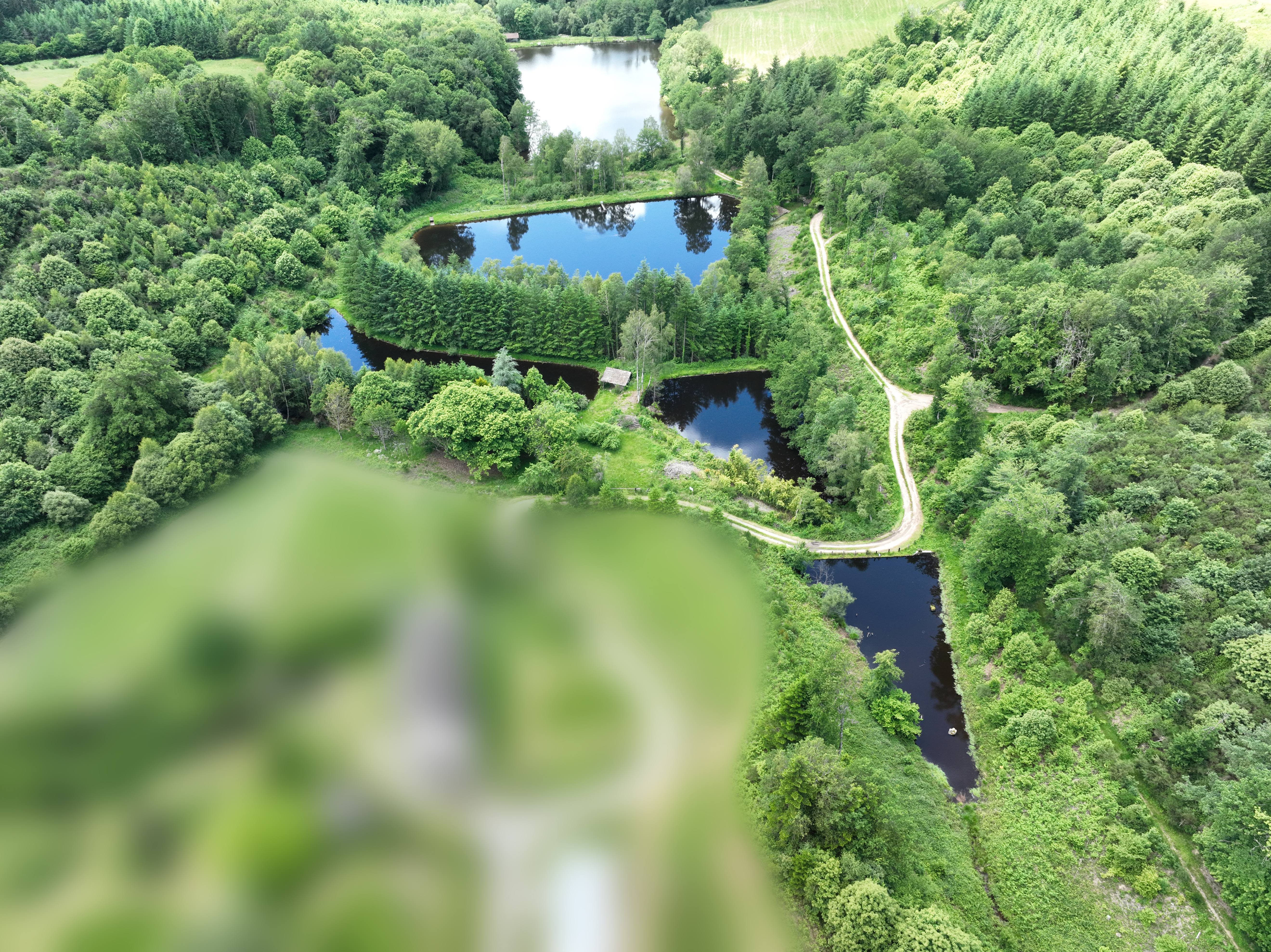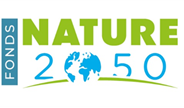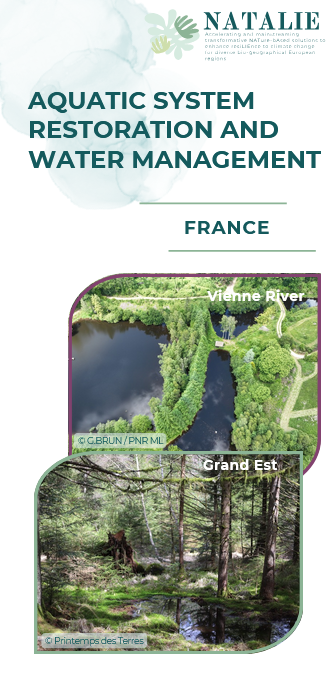FL#6 - "Grand Est" (France)
This case study is also available in French.

The case study in 5 minutes

Location
The follower site, the Grand Est region, is connected to the demonstration site 6 (Vienne River). The Grand Est region is located in the northeast of France, bordering Belgium, Luxembourg, Germany and Switzerland.

Description of the area
-
Biogeographical region: Continental
-
Total Area: 57 441 km²
-
Landscape Context: Agricultural and industrial area
-
Topography & Geology: Intersection of mountain ranges, limestone and clay–marl plateaus
-
Hydrology: Major rivers (Rhine, Meuse, Moselle, Marne) criss-cross the region, with transboundary connections to Switzerland, Germany, and Luxembourg
-
Biodiversity: Exceptional ecological diversity driven by varied geology and climates; under threat from land artificialization, habitat fragmentation, and diffuse pollution

Climatic Challenges


Planned activities
The intensity of the water related challenges will depend on the ability to:
• Encourage infiltration of groundwater in winter and spring, when rainfall is at its highest, so that groundwater can play its role in supporting the water table and the water tables can play their role of support in summer and autumn,
• Structure the necessary water savings through a collective, supportive and anticipatory approach.
The main goal of FL#6 is to help creating an engaged community of stakeholders in the Grand Est Region to link biodiversity, climate change adaptation and socioeconomical challenges (forestry, agriculture and champagne, …). NAT2050 is already working with several local stakeholders and is funding some projects in the Grand Est region (see: La carte des réalisations Nature 2050 for more details).
The Grand Est Region is already working on biodiversity challenges with the Life Biodiv’Est Project. FL#6 aims to support the Biodiv’Est project and other biodiversity initiatives in the Region and complement them with knowledge from NATALIE partners and its capacity to mobilize public and private actors to help create and fund local projects. In the long term, some economic systems will have to shift their practices in order to adapt to future climate, hopefully by using biodiversity restoration.
Specific Follower Site actions to be implemented: No NBS project implementation will be done by FL#6 itself. The aim is to help local actors design and implement projects themselves and create new socioeconomics models using biodiversity-positive actions.

Progress
Since the beginning of the project, we have met a lot of regional stakeholders (mainly public), that are addressing water and climate change adaptation issues, to promote the implementation of NBS. These exchanges allow us to seek synergies and better define the needs of local players, especially concerning the need of NBS funding. Thus, we are currently co-designing (with local stakeholders) a new philantropic system to fund "water related" NBS in the Grand Est Region.
At the same time, thanks to the connections we have established with the European Interreg Upper Rhine Clim'Ability Care project, we have selected a site to deploy the Nature for Investment Launchramp tool (developed by GIB). The tool will thus be implemented in Hegenheim, in southern Alsace, to co-develop a local Nature-based Solutions (NbS) strategy to address flood risks and mobilize funding.

Ambition
Ambition during the project
The ambition is to demonstrate the effectiveness of the three NBS types in improving water flow and water quality using evidence-based knowledge.
Ambition after the project
Because wetlands restoration can be a very long process, improvements on hydrology should continue beyond the lifetime of the project. Furthermore, it is expected that the NATALIE NBS will be examples that will be followed by stakeholders at a larger scale.

Questions
Ever wondered how nature can help us tackle climate change? NBS are “Solutions inspired and supported by nature, which are cost-effective, simultaneously provide environmental, social and economic benefits and help build resilience.” European Commission, 2015.
In the Grand Est region, climate change is having irreversible effects on ecosystems (drought, intensification of heatwaves, wildfires, floods especially knowing that 20.2% of the built-up area is in a flood-risk zone.). As these impacts continue to intensify and deeply affect socio-economic and environmental systems, the need for territorial adaptation is becoming increasingly crucial. Regarding water issues, by the middle of the century, an increase in impacts is expected: soil droughts; growing difficulties in supplying drinking water to upstream basins and restrictions on extractions; and the complexity of managing water reservoirs and supporting low water levels.
Thus, strengthening the adaptation of territories to climate change by preserving and restoring ecosystems through the implementation of nature-based solutions - which are increasingly seen as essential and preferred actions to reduce risks linked to natural disasters (link), notably in local planning documents, such as the latest intervention program of the Rhine-Meuse Water Agency - is essential.

Gallery


Involved partners


